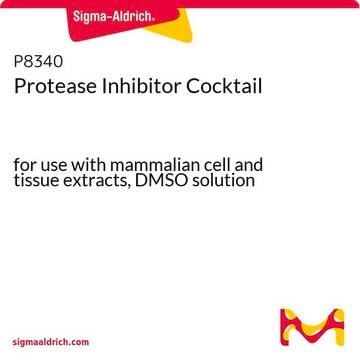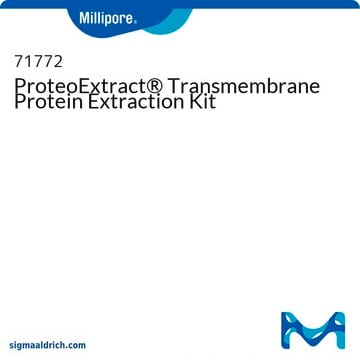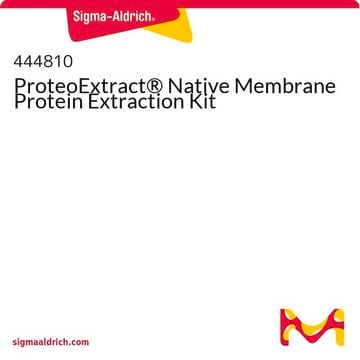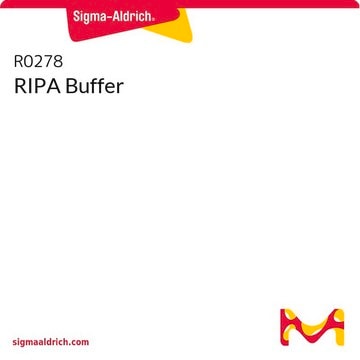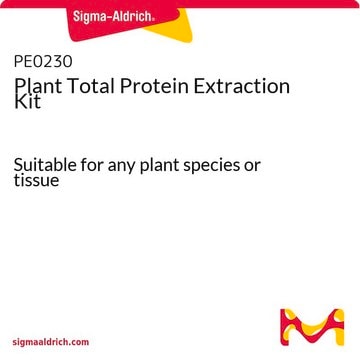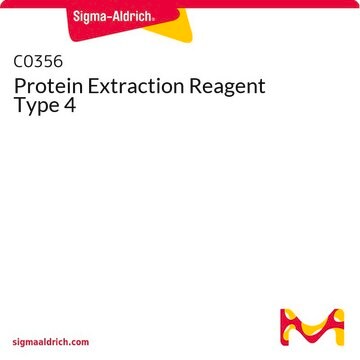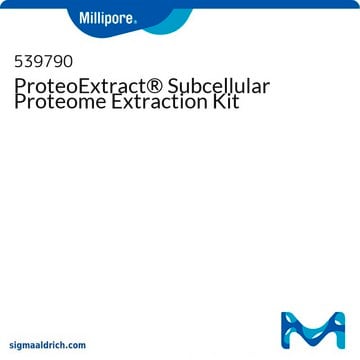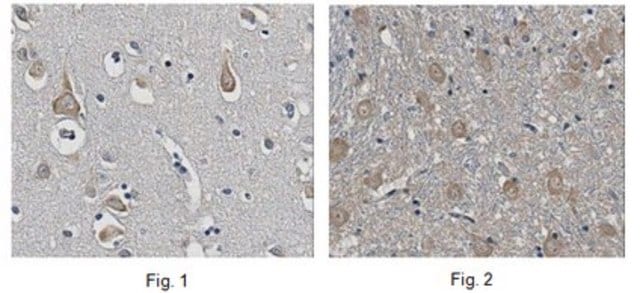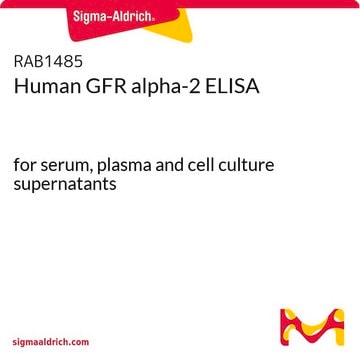CE0050
CelLytic™ MEM Protein Extraction Kit
Synonyme(s) :
Membrane protein extraction kit
Se connecterpour consulter vos tarifs contractuels et ceux de votre entreprise/organisme
About This Item
Code UNSPSC :
41116134
Nomenclature NACRES :
NA.56
Produits recommandés
Technique(s)
protein extraction: suitable
Niveau de qualité
Conditions d'expédition
wet ice
Température de stockage
−20°C
Description générale
CelLytic™ MEM Protein Extraction Kit offers a fast and convenient method to isolate hydrophobic and raft microdomain associated proteins from cells. The method is based on phase separation and does not require cell membrane isolation. The separated proteins can be used for further experiments such as SDS-PAGE, Western blotting, dot blotting, and immunoprecipitation. The kit has been tested on, but not limited to, HeLa, HEK-293, NIH 3T3, COS and CHO cell lines.
Membrane proteins make up around 20-30% of an organism′s genome and serve as cellular gatekeepers, regulators, and sensors. They have diverse cellular functions, such as shielding the cell from external toxins, being the starting point of intracellular signaling cascades, and retaining critical ion concentrations.
Application
CelLytic™ MEM Protein Extraction Kit has been used for de novo lipogenesis measurements using hepatocytes and to extract membrane proteins for western blotting.
Adéquation
Sufficient reagents supplied for 80 tests.
Informations légales
CelLytic is a trademark of Sigma-Aldrich Co. LLC
Composants de kit seuls
Réf. du produit
Description
- Lysis and Separation Buffer 50 mL
- Wash Buffer for CelLytic MEM 50 mL
- Sodium Chloride, 4M Solution 1.5 mL
Composants de kit également disponibles séparément
Réf. du produit
Description
FDS
- P8340Protease Inhibitor Cocktail, for use with mammalian cell and tissue extracts, DMSO solution 1 mLFDS
Mention d'avertissement
Warning
Mentions de danger
Conseils de prudence
Classification des risques
Eye Irrit. 2 - Skin Irrit. 2
Code de la classe de stockage
10 - Combustible liquids
Point d'éclair (°F)
188.6 °F - closed cup
Point d'éclair (°C)
87 °C - closed cup
Faites votre choix parmi les versions les plus récentes :
Certificats d'analyse (COA)
Lot/Batch Number
Vous ne trouvez pas la bonne version ?
Si vous avez besoin d'une version particulière, vous pouvez rechercher un certificat spécifique par le numéro de lot.
Déjà en possession de ce produit ?
Retrouvez la documentation relative aux produits que vous avez récemment achetés dans la Bibliothèque de documents.
Les clients ont également consulté
Yue Zhao et al.
Cancer medicine, 7(8), 3977-3987 (2018-07-06)
Esophageal squamous cell carcinoma (ESCC) is a malignant disease with poor prognosis. Because of early metastasis prior to diagnosis and therapeutic resistance, ESCC has become one of the leading causes of cancer-related death. Here, we investigated the clinicopathological significance of
Jun Yang et al.
Bioscience, biotechnology, and biochemistry, 83(6), 1117-1123 (2019-03-08)
It has been reported that lncRNA POU3F3 was upregulated in esophageal squamous-cell carcinomas, indicating its role as an oncogene in this disease. However, the mechanism of its function and its involvement in other malignancies is unknown. In the present study
Daisuke Kami et al.
BMC biotechnology, 13, 102-102 (2013-11-16)
Cell-based regeneration therapies have great potential for application in new areas in clinical medicine, although some obstacles still remain to be overcome for a wide range of clinical applications. One major impediment is the difficulty in large-scale production of cells
Marc Bramkamp et al.
Microbiology and molecular biology reviews : MMBR, 79(1), 81-100 (2015-02-06)
An interesting concept in the organization of cellular membranes is the proposed existence of lipid rafts. Membranes of eukaryotic cells organize signal transduction proteins into membrane rafts or lipid rafts that are enriched in particular lipids such as cholesterol and
Xiangquan Kong et al.
Molecular biology of the cell, 27(25), 3972-3979 (2016-11-01)
Hyaluronan (HA) in the endothelial glycocalyx serves as a mechanotransducer for high-shear-stress-stimulated endothelial nitric oxide synthase (eNOS) phosphorylation and nitric oxide (NO) production. Low shear stress (LSS) has been shown to contribute to endothelial inflammation and atherosclerosis by impairing the
Notre équipe de scientifiques dispose d'une expérience dans tous les secteurs de la recherche, notamment en sciences de la vie, science des matériaux, synthèse chimique, chromatographie, analyse et dans de nombreux autres domaines..
Contacter notre Service technique
